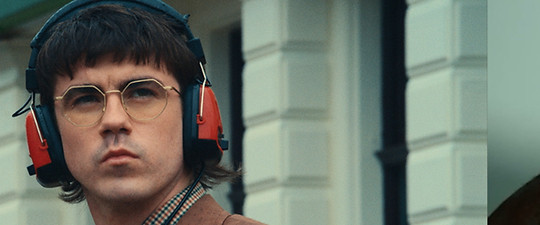Slicing Through The Noise: Inside the Editing Suite with Johnny Richards
Johnny Richards, senior editor and colourist at Bad Bones Films, defines his craft as “chaos with purpose.” Shaped by the cinematic worlds of Taxi Driver, Léon: The Professional and In the Mood for Love, his editing draws on the bold creativity of Elísabet Ronaldsdóttir, the Daniels and Luke Lynch. Now collaborating with director Harv Frost on a campaign for Black Honey, Richards fuses precision with wild experimentation, creating cuts that are as stylish as they are emotional. In a culture saturated with fast visuals, he proves that the true edge lies in instinct, influence and the perfect frame.
Written by Sarah Lucy Ashcroft
Published 22.08.2025


Izland Interview: Johnny Richards, Senior Editor and Colourist, Bad Bones Films
What got you into video editing and how important is it in the music industry?
I have always been inspired by the craft of creative storytelling and films, growing up on some older films such as Taxi Driver, Léon: The Professional and In the Mood for Love. Training and learning to edit really kicked off at university, where I often volunteered to work on projects, eventually getting into music videos later in my career. Video editing plays a huge role in the music industry, especially when it comes to music videos. Editing helps bring the song to life, making it more engaging for the audience. It's crucial for artists to create a visual connection with their music as it brings out the emotions and themes of a song, making it resonate deeper with the audience.
How has video editing changed over the years due to technological advances and upcoming trends?
The main change that has taken place is the fact that it’s more accessible than ever right now! A range of free software is available, as well as lot of shared knowledge on TikTok and YouTube, which have really had an influence on the current scene. For both myself and current trends in the space, AI-driven content is in the spotlight now, being incorporated into more and more commercials and films and it’s only going to improve with time. This is something that a lot of others and I are adapting to or at least keeping an eye on!
How would you describe your style and who are your biggest influences?
I’d describe my style often as chaos with purpose. I’ve always been a fan of the weird and wild, while also thinking about how I like to structure things and how long to hold onto a shot from an audience perspective. I always love taking inspiration and influences from editors, such as Elísabet Ronaldsdóttir, the Daniels and Luke Lynch – they are all so creative in their own way and really show their craft in their works.
What gives you the competitive edge in the industry?
To be honest, leaving any egos at the door and generally building relationships as much as possible – a lot of the time, editing can be a phone call and review and can also be 3-4 weeks in a room with someone arguing about a few frames here and there. Personally, as an editor, I always try to develop an environment for creative discussions and guidance. The director is always the captain of a ship. I just hope to be the glue and drive to get the vision where it needs to be.
What are the different steps you take from initial stage to the end product, especially regarding your music videos and are there many factors you have to take into account?
The initial steps always start off as a quick chat on the phone or over coffee just to talk about the ideas and vision before any shooting is done. This gives me time to prep and organise as necessary. When there’re lots of visual effects involved or something that’s a little more out there that needs a bigger team, I’m usually brought in during preproduction to see if it’s feasible regarding budget and time, while also consulting other professionals. This can shape the idea and establish some other creative flare that can be explored.
How do you adapt your style of editing based on the collaboration you’re working on and their individual goals?
Usually, there are different rules and guides to follow depending on what project I’m editing. My style normally comes out in all my work, but I wouldn’t edit a pop artist music video in the same way that I’d edit a metal band. A lot of what is involved is also to do with how the artist wants to be represented and how the director’s vision wants to highlight it. What are your upcoming projects and collaborations you’re working on? I’m currently working with director Harv Frost and Bad Bones Films to create some creative works with the band Black Honey. At the moment, there are a lot of people involved, and it looks to be a fully creative campaign. It is currently in pre-production, so only initial preps and tests ahead of time for the shoot are happening at the moment. This is something I’ve been looking forward to working on, especially as Harv is an amazing director.
What advice would you give to anyone wanting to pursue a career in this industry based on what you’ve learnt along the way?
For people starting now, my best advice would be to always make content, work with your friends and take any opportunity that comes your way. Video editing is always something people get better at over time, so learning on the job or creating your own works will help you get where you need to be.






Follow Johnny on Instagram: @johnnyeditorvfx

